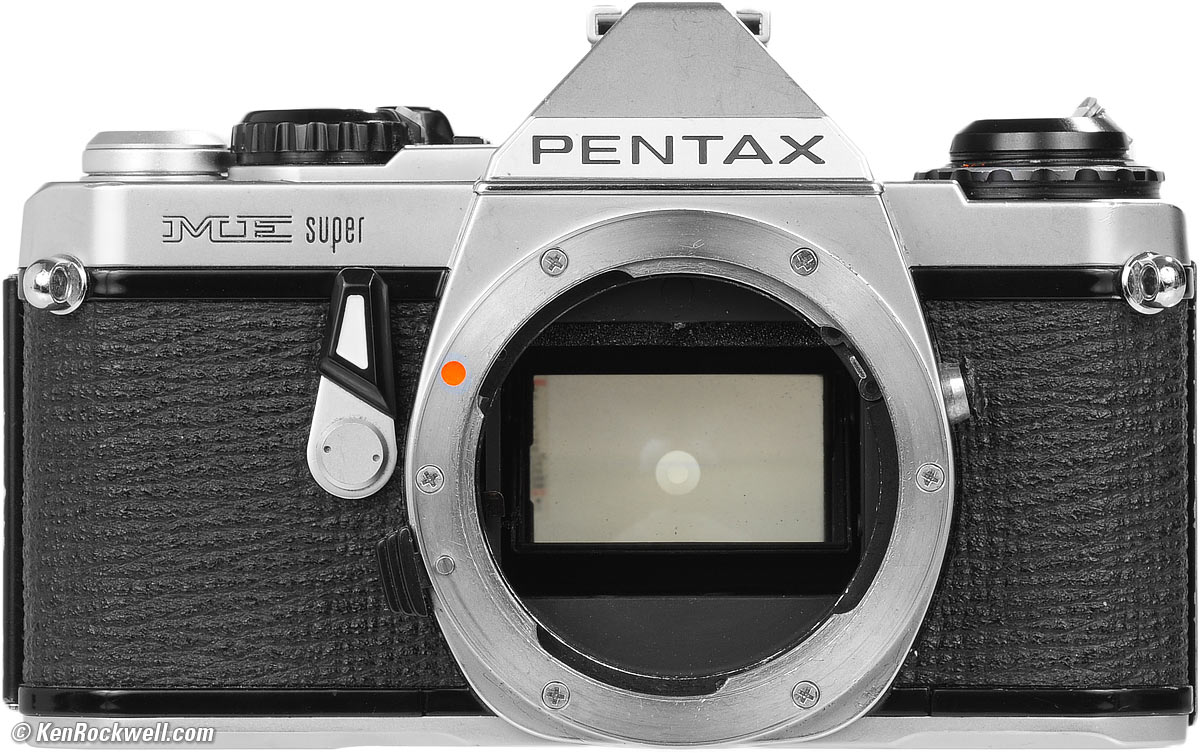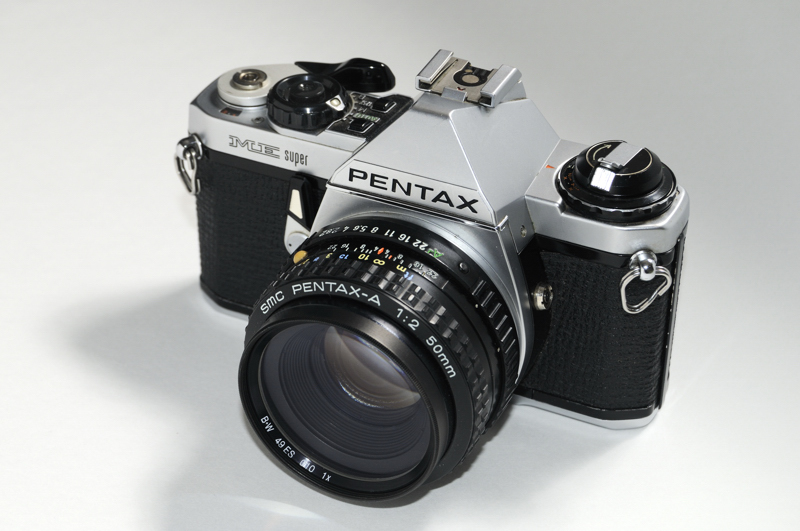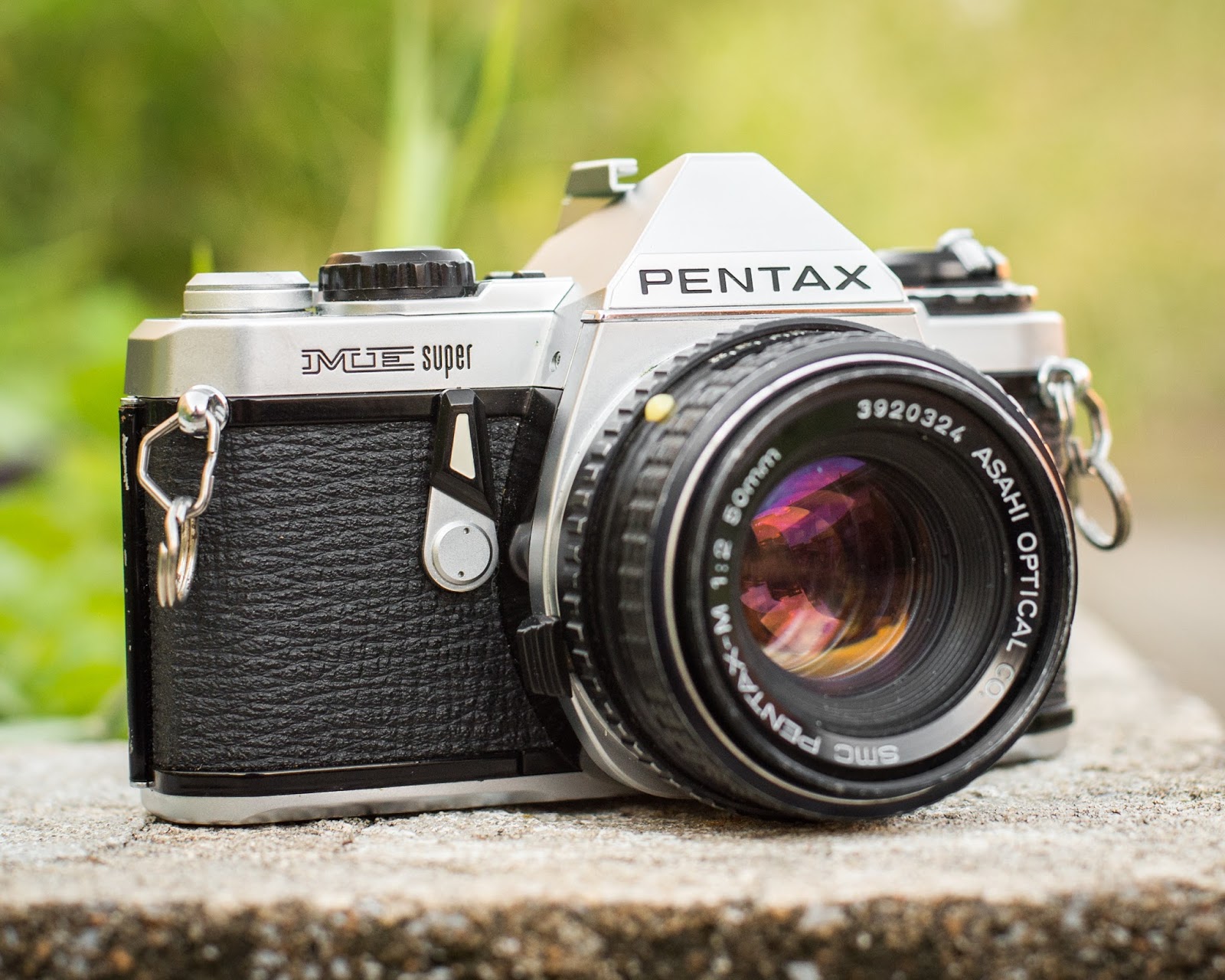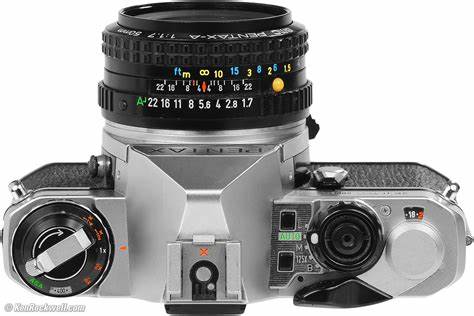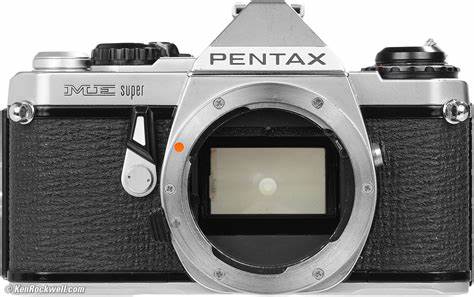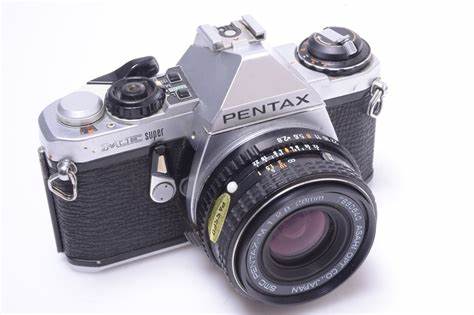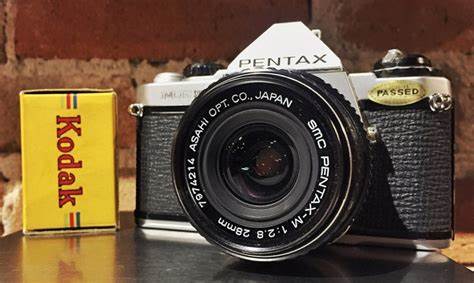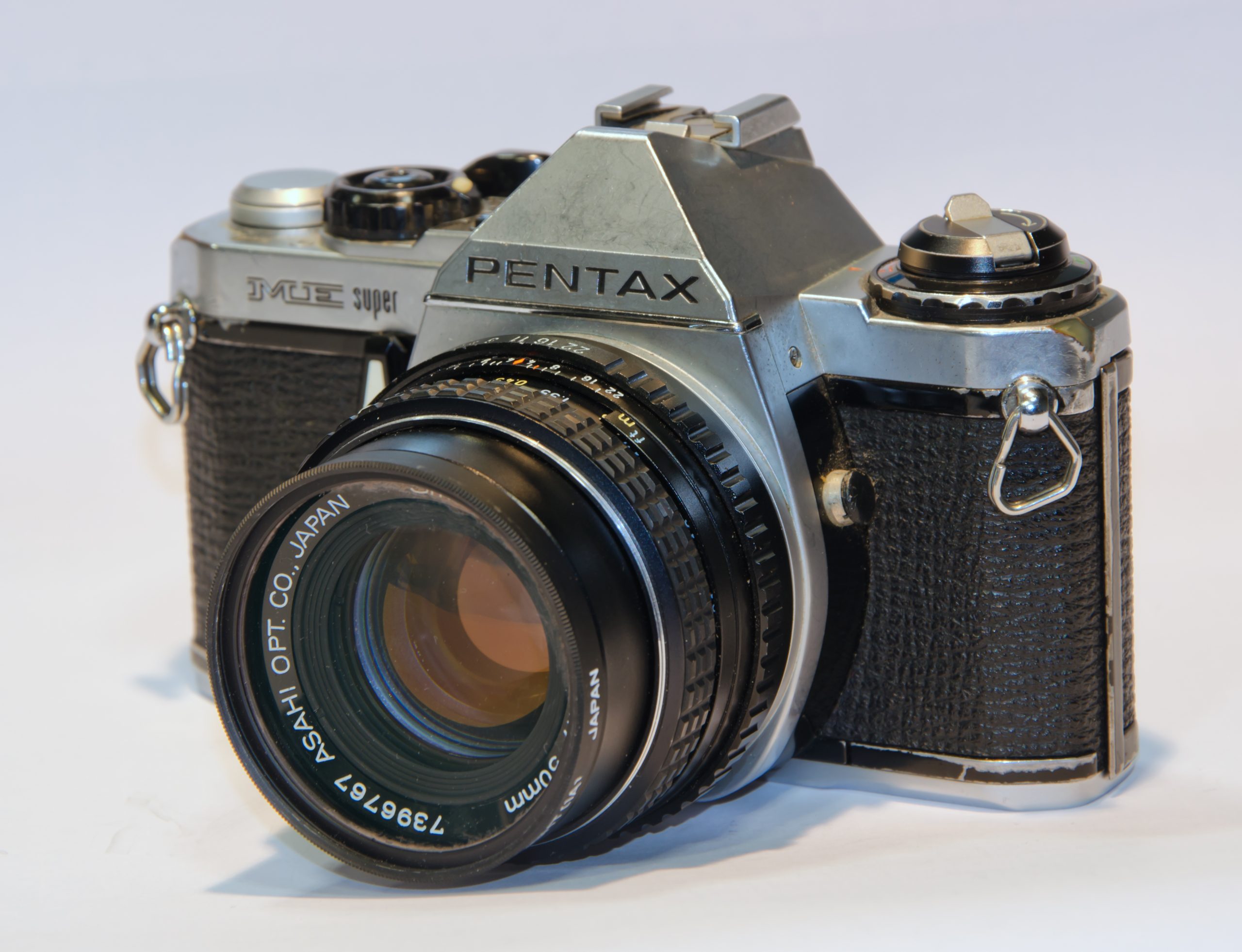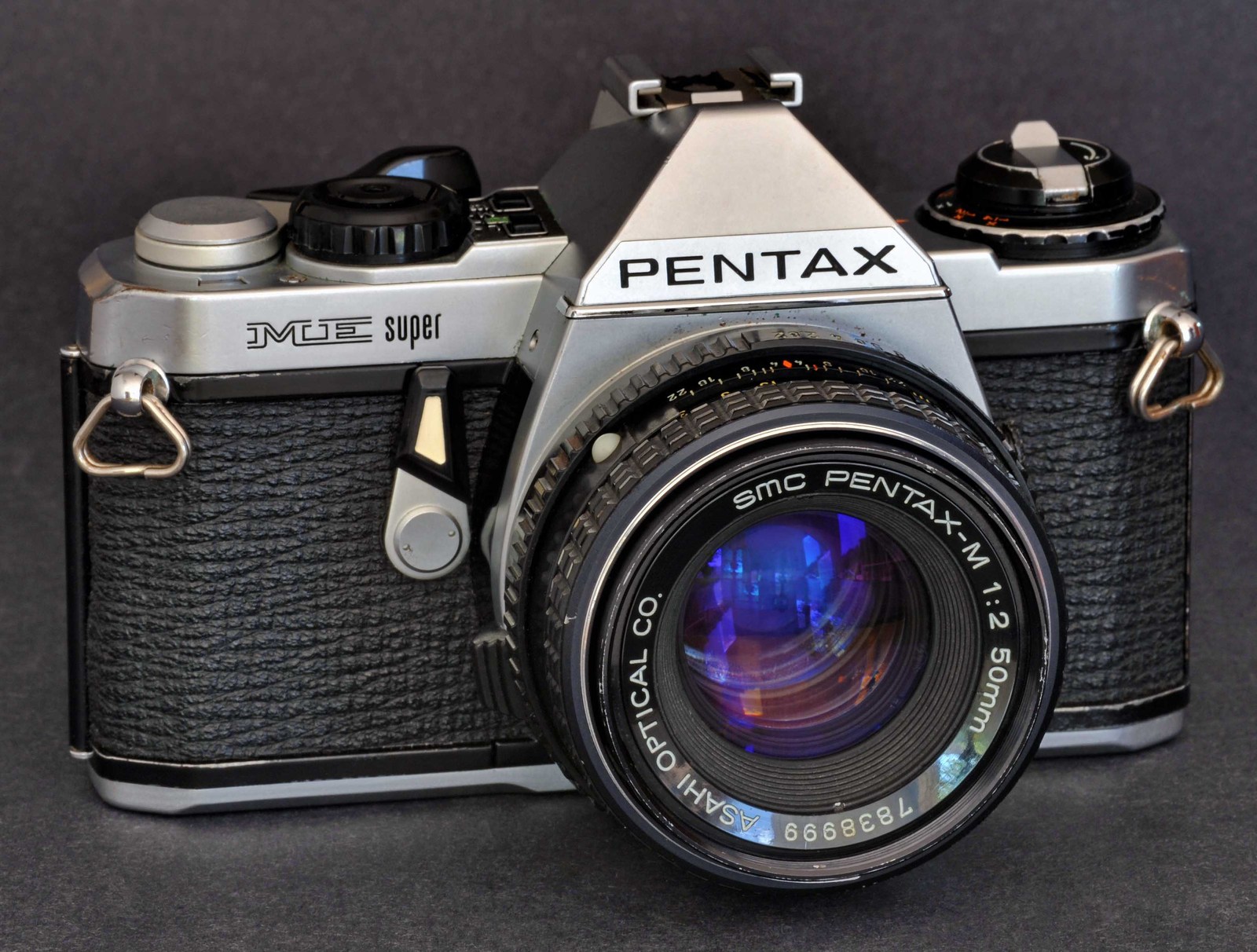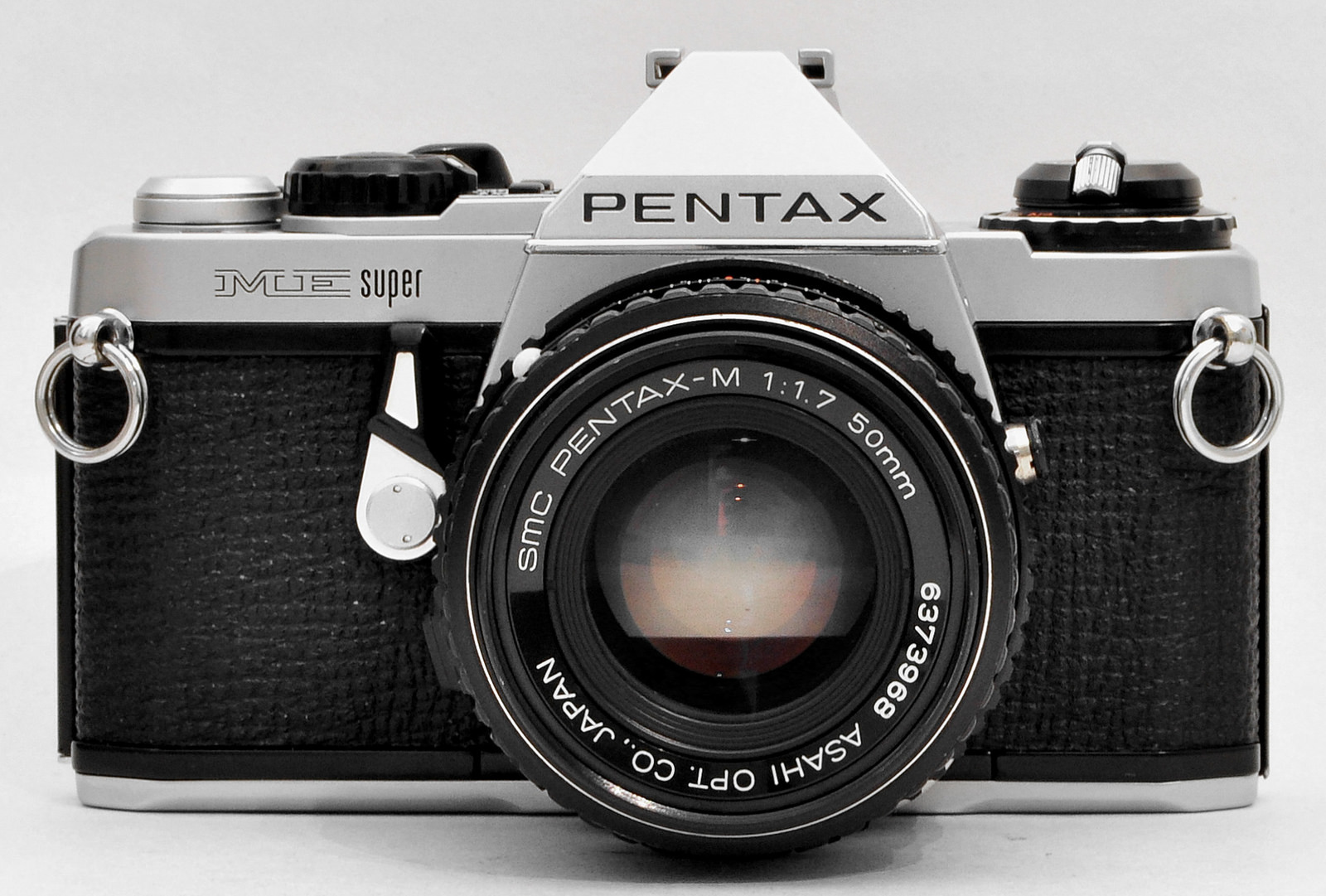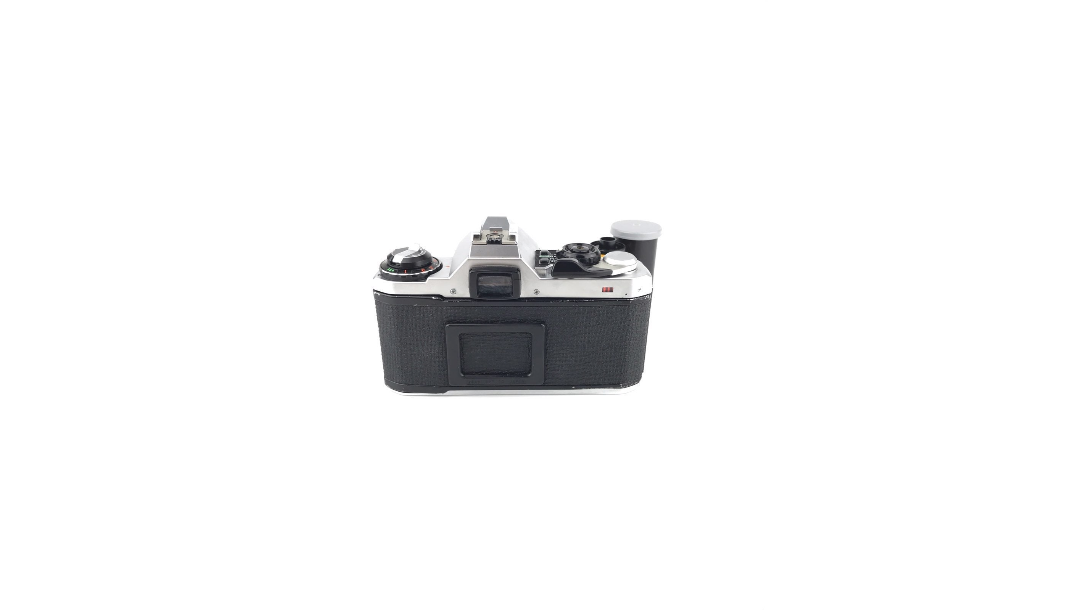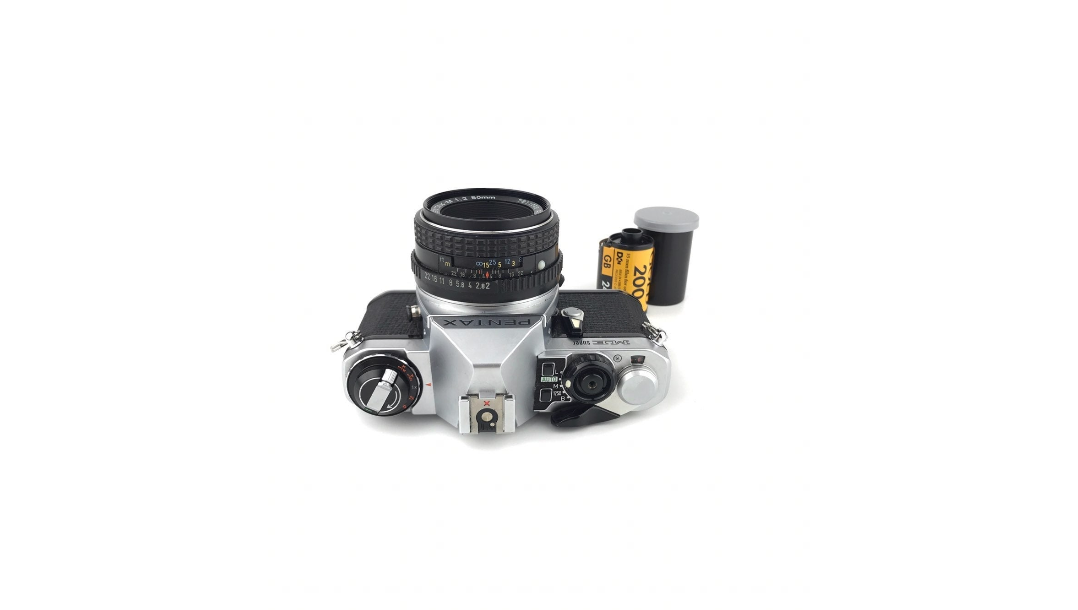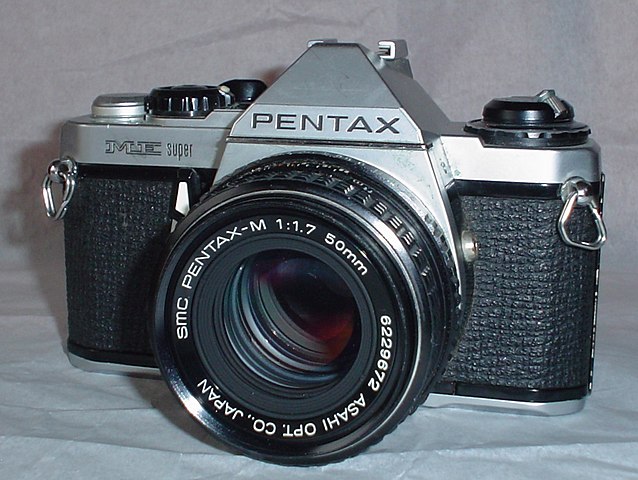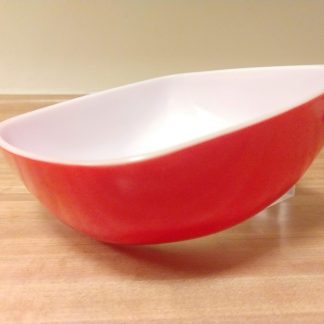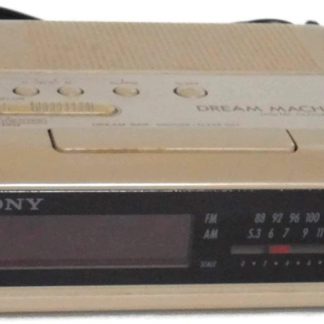Description
 Product details
Product details
In 1977, Pentax had introduced two compact 35mm SLRs, the MX and the ME, after the Olympus OM-1 presented in 1972 had introduced a new trend for compactness in SLR cameras.
The Pentax ME was the automatic model, but it had no manual mode. It was replaced in 1979 by the simpler MV and the more advanced ME Super, which was the smallest and lightest SLR (440g) available, with the following changes:
- Manual mode added
- Shutter speed range from 4s to 1/2000, sync at 1/125
- Additional shoe contact for dedicated Pentax flash units
- Different finder magnification
- The marking “ASAHI” in the pentaprism housing was eliminated sometime between the ME and the ME Super
- The Pentax ME Super was an aperture priority automatic camera, with an electronic focal plane shutter from 4s to 1/2000, flash synchronized at 1/125.
- The camera also shoots manually (no battery) at the 1/125 flash speed.
- The shutter curtains were metal and had a vertical movement. For manual mode, the customary shutter knob was replaced by two buttons, up and down, to select the shutter speed. The exposure meter was of the standard TTL open aperture center weighted type. It was activated by a slight pressure on the release button.
View Pentax ME Super User Manual
Package Contents
- Pentax ME Super Body
- Pentax Asashi SMC 50mm Lens f/2.0
- Pentax front lens cap
- Vintage Full Body and lens Case
- Pentax Strap
The Pentax ME Super had a 0.95x viewfinder, covering 92% of the field. The finder screen was fixed, with a split image and a microprism ring in the center. The shutter speed chosen by the camera or the user was displayed in the finder, the aperture was not.
There was a self-timer and a hot shoe on the top of the prism with an additional contact for dedicated Pentax flash units. The selector around the release button had five positions: L (lock), Auto, M (manual), 125 and B. The Pentax ME Super could attach the external winder ME (1.5 i/s) or the later Winder ME II (2i/s). The Pentax ME Super could also mount a Dial Data ME databack, or the later Digital Data M databack via a cord adapter.
The lenses were interchangeable with the K bayonet mount. Together with the ME and MX, the SMC Pentax-M series of compact lenses were introduced.
The Pentax ME Super existed in chrome or black finish. There was a special edition called ME Super SE, only sold in chrome finish; the differences are the SE marking and the diagonal instead of horizontal split-image device in the focusing screen.[1]
A derivative with a primitive autofocus mechanism, called the Pentax ME-F, was released in 1981. Production of the ME Super stopped in 1986.
Technical Specifications
| General | |
|---|---|
| Lens Mount | K |
| Mount Limitations | The lens must be set to a numerical aperture |
| Self-Timer | 4 ~ 10 sec |
| Mirror Lock-Up | — |
| Cable Release | mechanical |
| Infra-Red Release | — |
| Additional Features | — |
| Width x Height x Depth | 131.5 x 83 x 49.5 mm |
| Weight | 445 g |
| Exposure System | |
| Exposure Modes | Av, M |
| Metering Modes with K and M Lenses | center-weighted |
| Metering Modes with A and newer Lenses | center-weighted |
| Meter Material | GPD |
| Exposure Compensation (Step) | +/-2 (1 EV steps) |
| Exposure Lock | — |
| Meter Range | 1 ~ 19 EV |
| Manual ISO Range | 12 ~ 1600 ASA |
| Shutter | |
| Construction | electronic (vertical) |
| Material | metal |
| Shutter Speeds | 4 ~ 1/2000, B |
| Mechanical Speeds | X, B |
| Viewfinder | |
| Magnification [Coverage] | 0.95x [92%] |
| Aperture Indication | — |
| Shutter-Speed Indication | LED |
| Interchangeable Screens | — |
| Power Source | |
| Batteries | 2 x 1.5 Volt silver-oxide (A76, SR44) or alkaline (LR44) |
| External | — |
| Continuous Shooting | |
| Continuous Shooting | manual wind lever |
| Compatible with Winder(s) | ME, ME II |
| Flash System | |
| Command Protocol(s) | analog |
| Features | S |
| Synchronization Speed(s) | 1/125 ~ 4, B |
| Built-In Flash | — |
| Overview | |
|---|---|
| Maker | Asahi Optical Co., Ltd. |
| Type | SLR |
| Lens | |
| Lens mount | Pentax K-F mount |
| Sensor/medium | |
| Recording medium | 135 film |
| Focusing | |
| Focus | Manual Focus |
| Exposure/metering | |
| Exposure | Aperture priority, Manual |
| Flash | |
| Flash | Hot shoe |
| Shutter | |
| Shutter speeds | 4 – 1/2000 s |
| General | |
| Dimensions | 131.5 × 83 × 49.5 mm / 5.2 x 3.3 x 2 inch |
| Weight | 460 g (1.01 lb) |
About Pentax
The corporation is best known for its “Pentax” brand cameras, starting with the pivotal “Asahi Pentax” single-lens reflex camera of 1957, which followed Asahi’s first series of cameras, the Asahiflex of 1952 – these were the first Japanese-made SLRs for 35mm film, and the Asahiflex IIB of 1954 the first Japanese SLR with an instant-return mirror. The Asahi Pentax itself was the first Japanese fixed-pentaprism SLR. In 1969 under the sub brand “Pentax 6×7”, the company started to produce medium format 120 6x7cm cameras. In 1990 the company renamed the sub brand from “Pentax 6×7” to “Pentax 67”.


